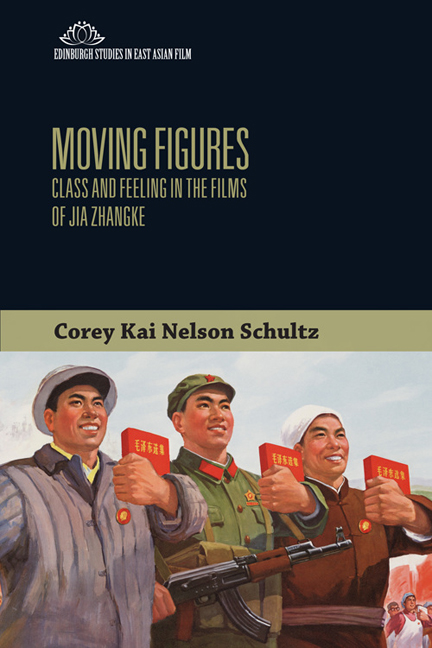Book contents
- Frontmatter
- Contents
- List of Figures
- Acknowledgments
- Introduction
- 1 The Worker Class: From Leader to the Margins
- 2 The Peasant and the Mingong: From Empathy to Sympathy to Looking Back
- 3 The Soldier: From Degraded Reproduction to Avenging Hero
- 4 The Intellectual: Power and the Voice
- 5 The Entrepreneur: From Crook to “New Reform Model”
- Notes
- Filmography
- Works Cited
- Index
1 - The Worker Class: From Leader to the Margins
Published online by Cambridge University Press: 10 May 2023
- Frontmatter
- Contents
- List of Figures
- Acknowledgments
- Introduction
- 1 The Worker Class: From Leader to the Margins
- 2 The Peasant and the Mingong: From Empathy to Sympathy to Looking Back
- 3 The Soldier: From Degraded Reproduction to Avenging Hero
- 4 The Intellectual: Power and the Voice
- 5 The Entrepreneur: From Crook to “New Reform Model”
- Notes
- Filmography
- Works Cited
- Index
Summary
Introduction
In this chapter, I examine the figure of the worker and the feelings that it stimulates, which range from pride to shame, adulation to pity, development to ruin, and progress to decay. The worker class was once the vanguard of the Maoist state and society's most idealized class, but Jia's films deliberately juxtapose this iconic figure with what it has become in the contemporary era – an unemployed and ruined group whose factories and housing are also in ruin. I note how the films chart the class's downward trajectory – from the model worker heroine, Huang Baomei, in I Wish I Knew, who epitomizes the highpoint of this class during its Maoist heyday, to the class's role as “engine” of the nation during the socialist era in 24 City, to its mass layoffs and decline in the Reform era in Unknown Pleasures and Still Life, and finally to the class's replacement by the mingong (migrant workers) who have traveled from the rural areas to manufacturing centers in search of employment.
In the first section, I discuss the history of the worker class and how it was conceptualized and created as the epitome of the Maoist social order and viewed as the agent that would modernize and develop the nation. Then, I analyze the representation of the workers in Jia's films, specifically how they have been dethroned and made irrelevant during the Reform era. I show how the films contrast this once iconic class with images of what it has become – namely, a class in ruin, redundant in the new economy, and in the process of disappearing. I examine the environment of ruin associated with it in the films, arguing that ruin represents the worker class, the Maoist state, and the collapse of the state's moral responsibility towards the people. I analyze the feelings that arise from the repeating imagery of factories in ruin, and how that imagery evokes contradictory structures of feeling, due to how it has been symbolized over the centuries in Chinese visual culture.
- Type
- Chapter
- Information
- Moving FiguresClass and Feeling in the Films of Jia Zhangke, pp. 20 - 47Publisher: Edinburgh University PressPrint publication year: 2018



